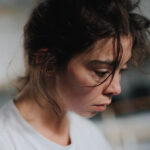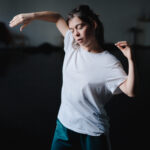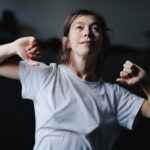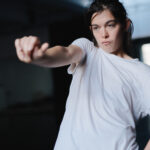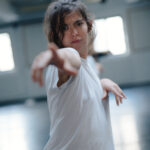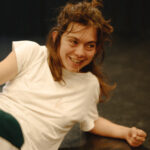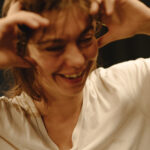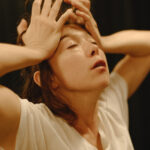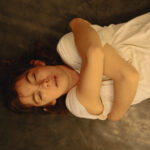MOTOR UNIT – SATI VEYRUNES
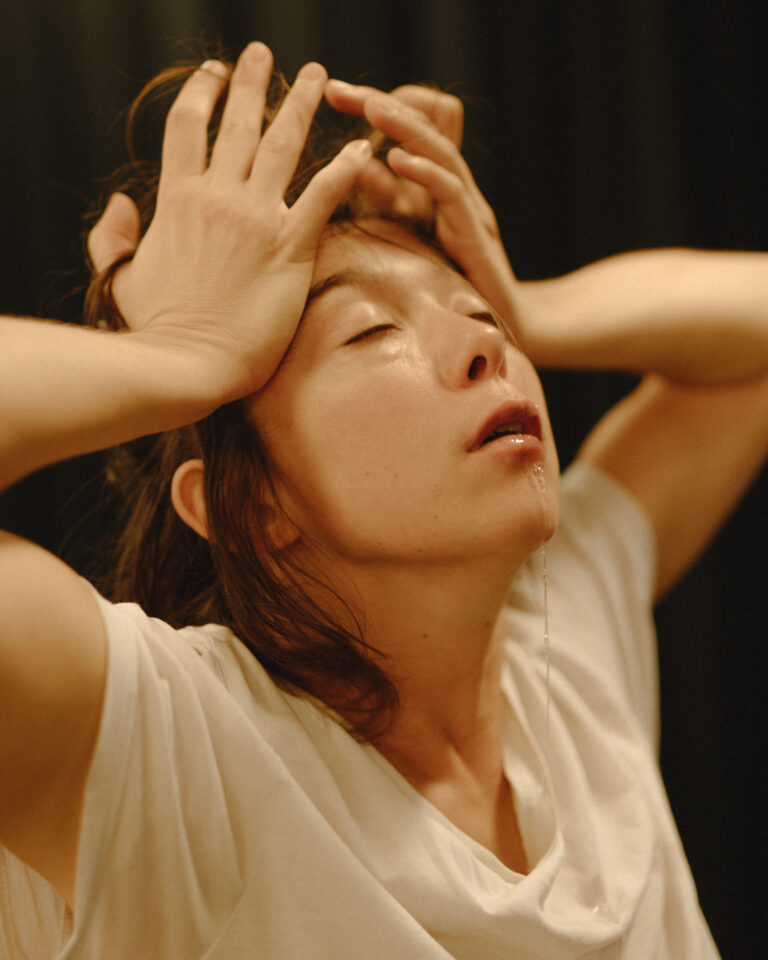
PREMIERES: 11-14 March 2026, La Ménagerie de Verre, Paris | 20-21 March 2026, Klap Maison pour la dans, Marseille
CREATION PERIODS: 23-30 September 2025, Budapest | 9-16 December 2025, Marseille | 5-9 January 2026, Paris | 16-20 February 2026, Nantes
PERFORMER: Sati Veyrunes
CHOREOGRAPHERS: Erna Ómarsdottir & Adrienn Hód
LIGHT, SOUND, STAGE MANAGER: Marie Predour
COPRODUCTION PARTNERS: La Ménagerie de verre – Paris, Klap Maison pour la danse – Marseille, ICI-CCN de Montpellier Montpellier / Occitanie, OFF Foundation
In contemporary dance, we often know the works and names of the choreographers, but less frequently those of the performers. Yet, through their unique interpretations, performers also contribute to the creation of an artwork, shaping the overall artistic landscape.
This project presents a choreographic world through my own sensibility.
For the past two years, I have been touring two solos internationally: Oona Doherty’s Hope Hunt and the ascension into Lazarus—her revelatorypiece, in which I took on the role in 2021—and Bless the sound that saved a witch like me, which emerged from my collaboration with Benjamin Kahn (Aerowaves Twenty24).
The idea for this new project stemmed from discussions with Philippe Quesne, followed by exchanges with La Ménagerie de verre, around the concept of the solo performer as a thread connecting diverse choreographic languages. This dialogue intersected with the notion of transmitting the contemporary dance repertoire, which resonated with my strong desire for artistic collaboration with choreographers Erna Ómarsdóttir and Adrienn Hód. I invited them to share material from their repertoires, and this project has taken the form of a double bill, in which their two worlds converse.
Erna Ómarsdóttir will pass on an excerpt from her significant work IBM 1401 – A User’s Manual. This solo, created in 2002, was first presented at La Ménagerie de verre the same year.
I will also physically reactivate various archive materials from Adrienn Hód’s repertoire, which spans from 2011 to 2024. Adrienn is a key figure in the Hungarian experimental dance scene, and her work will further enrich this project.
At its core, this project arises from my desire to engage with existing works. I am deeply invested in the transmission of the contemporary dance repertoire because I believe it is not fixed or static. Instead, it is a living history, where different temporalities intertwine. I seek a dance practice that embraces these diverse relationships to time.
My first encounter with Erna Ómarsdóttir was in 2019, during my graduation project at SEAD (Salzburg Experimental Academy of Dance). It was through her that I began to understand that my entire body—my face, my voice—are integral to dance. With IBM 1401 – A User’s Manual, Erna expanded my understanding of movement and performance. Her work, marked by containment and precision, invites us to remain deeply connected deeply connected to expansive spaces, both internal and external. This piece opens up a broad spectrum of possible presences.
Though I have not yet worked with Adrienn Hód, our desire to collaborate feels instinctive. Her work speaks to me of stripping, unveiling, and peeling back layers. She has proposed that I reactivate choreographic material from her pieces created between 2011 and 2024. This process is unusual—where typically a choreographer assembles a team around a concept, in this case, the performer selects and reactivates preexisting material. This challenge excites both of us: what if a dance piece were a curated selection, by the performer, of choreographic material spanning a decade?
I see myself as a bridge between these two languages, facilitating a dialogue between heterogeneous forms. I will navigate the tension between being present in both the past and the present, drawing on multiple layers of time.
The languages of Erna Ómarsdóttir and Adrienn Hód are deeply intuitive. They carry powerful imagery, spaces, and themes related to the relationship with scream, with silence. Their dances are beautiful because the performer never attempts to conceal the effort it requires. I am drawn to dance that demands self-overcoming, where there is beauty in revealing this struggle.The process of transmission moves me profoundly. It exists on a delicate line between understanding the original material and transforming it through the act of transmission. As Anne Bénichou writes, “The body as archive becomes a space for reinventing and rewriting works.” The excerpts from Erna and Adrienn’s works serve as articulation processes that bear witness to their time, yet they also become new containers for the performer today. It is this “third space”—a new place born from the encounter between a singular work and the performer’s transformation—that we wish to share.
– Sati Veyrunes











